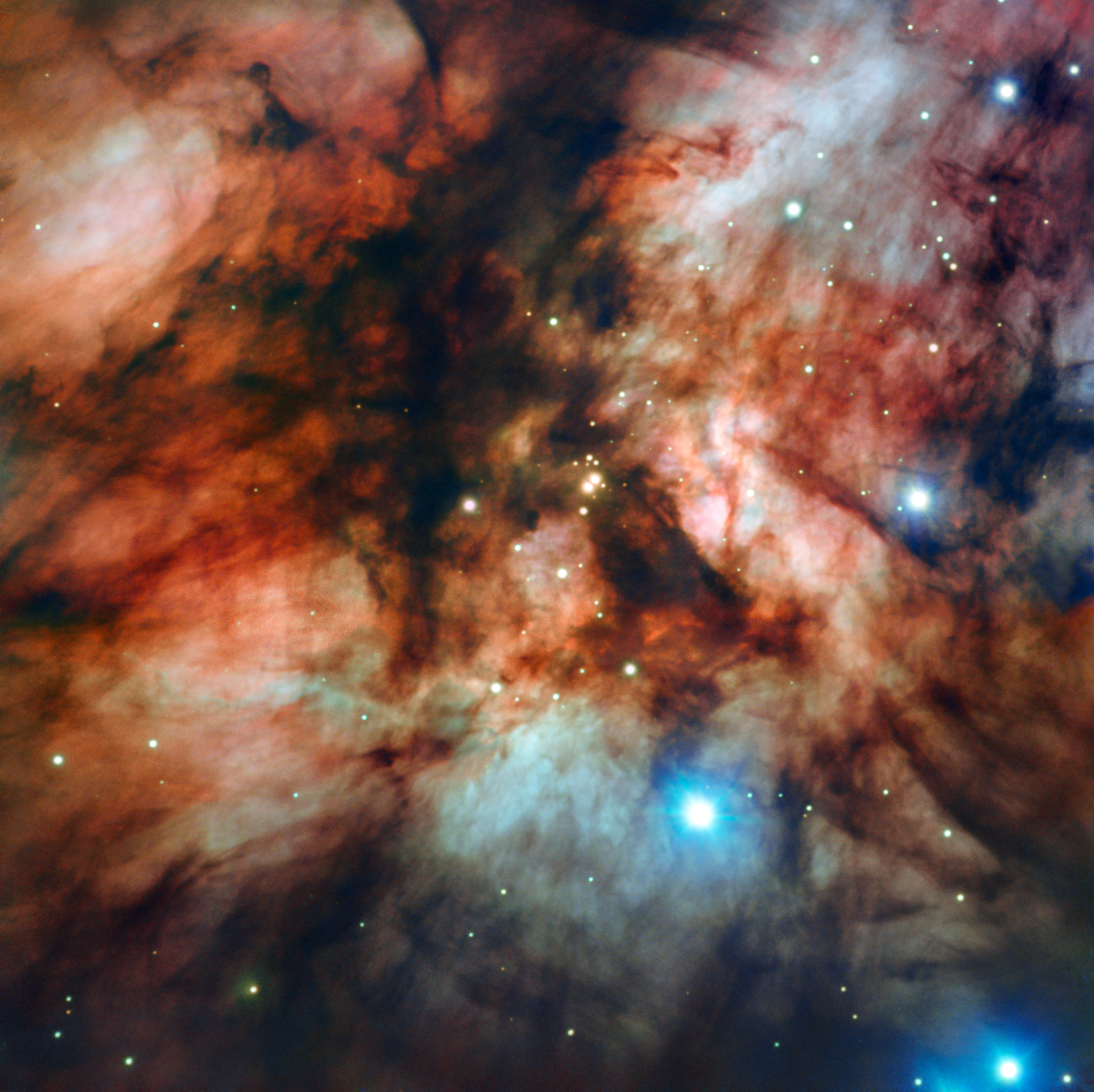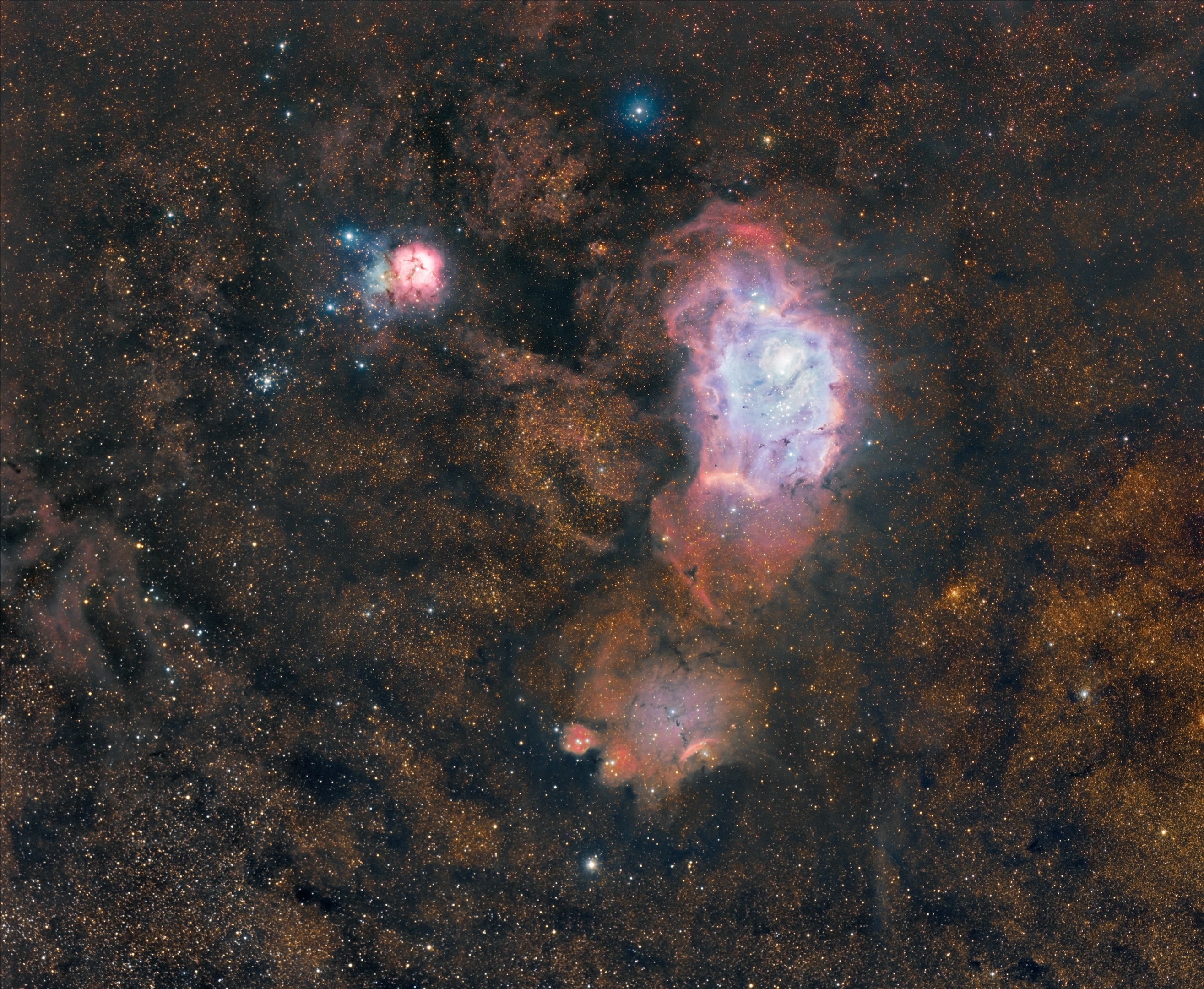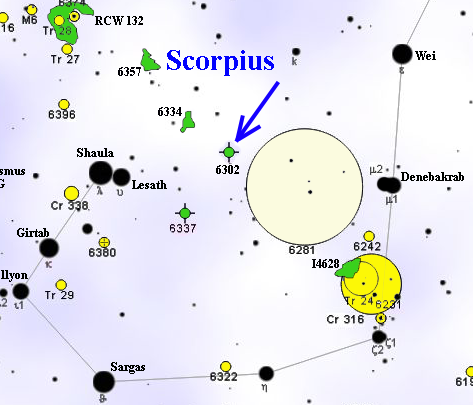|
Gum Catalog
The Gum catalog is an astronomical catalog of 84 emission nebulae in the southern sky. It was made by the Australian astronomer Colin Stanley Gum (1924-1960) at Mount Stromlo Observatory using wide field photography. Gum published his findings in 1955 in a study entitled ''A study of diffuse southern H-alpha nebulae'' which presented a catalog of 84 nebulae or nebular complexes. Similar catalogs include the Sharpless catalog and the RCW Catalogue, RCW catalog, and many of the Gum objects are repeated in these other catalogs. However, the RCW and Gum catalogs were mainly of the southern hemisphere (Mount Stromlo is in the southern hemisphere) The Gum Nebula is named for Gum, who discovered it as Gum 12; it is an emission nebula that can be found in the southern constellations Vela (constellation), Vela and Puppis. Examples List *IC 2177, Gum 1 *Gum 2 *Gum 3 *NGC 2359, Gum 4 *Gum 5 *Gum 6 *Gum 7 *NGC 2467, Gum 8 *Gum 9 *Gum 10 *Gum Nebula, Gum 12 *Gum 13 *Gum 14 *Gum 15 *Vela ... [...More Info...] [...Related Items...] OR: [Wikipedia] [Google] [Baidu] |
Astronomical Catalog
An astronomical catalogue is a list or tabulation of astronomical objects, typically grouped together because they share a common type, Galaxy morphological classification, morphology, origin, means of detection, or method of discovery. The oldest and largest are star catalogues. Hundreds have been published, including general ones and special ones for such objects as Infrared astronomy, infrared stars, variable stars, giant stars, multiple star systems, star clusters, and so forth. General catalogues for deep-sky objects or for objects other than stars are also large. Again, there are specialized ones for nebulas, galaxies, X-ray astronomy, X-ray sources, Astronomical radio source, radio sources, quasars and other classes. The same is true for asteroids, comets and other Small Solar System body, solar system bodies. Astronomical catalogues such as those for asteroids may be compiled from multiple sources, but most modern catalogues are the result of a particular astronomical su ... [...More Info...] [...Related Items...] OR: [Wikipedia] [Google] [Baidu] |
RCW 36
RCW 36 (also designated Gum 20) is an emission nebula containing an open cluster in the constellation Vela. This H II region is part of a larger-scale star-forming complex known as the Vela Molecular Ridge (VMR), a collection of molecular clouds in the Milky Way that contain multiple sites of ongoing star-formation activity. The VMR is made up of several distinct clouds, and RCW 36 is embedded in the VMR Cloud C. RCW 36 is one of the sites of massive-star formation closest to the Solar System, whose distance of approximately 700 parsecs (2300 light-years). The most massive stars in the star cluster are two stars with late-O or early-B spectral types, but the cluster also contains hundreds of lower-mass stars. This region is also home to objects with Herbig–Haro jets, HH 1042 and HH 1043. It is about 1.1 million years old. Star formation in RCW 36 Like most star-forming regions, the interstellar medium around RCW 36 contains both the gas from which stars form and some newl ... [...More Info...] [...Related Items...] OR: [Wikipedia] [Google] [Baidu] |
Trifid
Trifid is Latin for "split into three parts" or "threefold" and may refer to: * ''Trifid'' (journal), a Czech-language periodical *Trifid Nebula in the constellation Sagittarius * Trifid cipher, a fractionated cipher Distinguish from *Triffid, a fictional dangerous mobile plant in the 1951 novel ''The Day of the Triffids'' by John Wyndham *The Triffids The Triffids were an Australian alternative rock and pop band, formed in Perth in Western Australia in May 1978 with David McComb as singer-songwriter, guitarist, bass guitarist and keyboardist.McFarlane (1999). Encyclopedia entry fo"The Triff ..., a popular Australian band named for the plant See also * '' The Day of the Triffids (other)'' {{dab ... [...More Info...] [...Related Items...] OR: [Wikipedia] [Google] [Baidu] |
Trifid Nebula
The Trifid Nebula (catalogued as Messier 20 or M20 and as NGC 6514) is an H II region in the north-west of Sagittarius in a star-forming region in the Milky Way's Scutum–Centaurus Arm. It was discovered by Charles Messier on June 5, 1764. Its name means 'three-lobe'. The object is an unusual combination of an open cluster of stars, an emission nebula (the relatively dense, reddish-pink portion), a reflection nebula (the mainly NNE blue portion), and a dark nebula (the apparent 'gaps' in the former that cause the trifurcated appearance, also designated Barnard 85). Viewed through a small telescope, the Trifid Nebula is a bright and peculiar object, and is thus a perennial favorite of amateur astronomers. The most massive star that has formed in this region is HD 164492A, an O7.5III star with a mass more than 20 times the mass of the Sun. This star is surrounded by a cluster of approximately 3100 young stars. Characteristics The Trifid Nebula was the subject of an investi ... [...More Info...] [...Related Items...] OR: [Wikipedia] [Google] [Baidu] |
Lagoon Nebula
The Lagoon Nebula (catalogued as Messier 8 or M8, NGC 6523, Sharpless 25, RCW 146, and Gum 72) is a giant interstellar cloud in the constellation Sagittarius. It is classified as an emission nebula and has an H II region. The Lagoon Nebula was discovered by Giovanni Hodierna in 1654 and is one of only two star-forming nebulae faintly visible to the eye from mid-northern latitudes. Seen with binoculars, it appears as a distinct cloud-like patch with a definite core. Within the nebula is the open cluster NGC 6530. Characteristics The Lagoon Nebula is estimated to be between 4,000–6,000 light-years away from the Earth. In the sky of Earth, it spans 90' by 40', which translates to an actual dimension of 110 by 50 light years. Like many nebulae, it appears pink in time-exposure color photos but is gray to the eye peering through binoculars or a telescope, human vision having poor color sensitivity at low light levels. The nebula contains a number of Bok globules (dark, colla ... [...More Info...] [...Related Items...] OR: [Wikipedia] [Google] [Baidu] |
NGC 6357
NGC 6357 is a diffuse nebula near NGC 6334 in the constellation Scorpius. The nebula contains many proto-stars shielded by dark discs of gas, and young stars wrapped in expanding "cocoons" or expanding gases surrounding these small stars. It is also known as the Lobster Nebula. This nebula was given the name War and Peace Nebula by the Midcourse Space Experiment scientists because of its appearance, which, in infrared images the bright, western part resembles a dove, while the eastern part looks like a skull. A petition by anime fans to rename it as the Madokami nebula, due to resemblance with a character, was unsuccessful. It is located about 5,500 light years away from Earth. NGC 6357 is connected by a filamentary structure to NGC 6334, and the two may form a single complex. Associated open clusters Pismis 24 This nebula includes the open cluster Pismis 24, which is home to several massive stars. One of the brightest stars in the cluster, Pismis 24-1, was thought possibl ... [...More Info...] [...Related Items...] OR: [Wikipedia] [Google] [Baidu] |
NGC 6334
NGC 6334 is a massive emission nebula and star formation, star-forming region located in the constellation Scorpius. It is colloquially known as the Cat's Paw Nebula, and can be found 3° to the west-northwest of the bright star Lambda Scorpii. NGC 6334 was discovered by English astronomer John Herschel on June 7, 1837, who observed it from the Cape of Good Hope in South Africa. It spans an angular area larger than the full Moon. This structure is located in the Carina–Sagittarius Arm of the Milky Way, at a distance of approximately from the Sun. This nebula is a high mass filamentary cloud structure spanning . In the visible part of the spectrum, NGC 6334 emits mainly in red (from hydrogen atoms) and blue (from oxygen atoms). The interior is heavily obscured by interstellar dust, with clumps ranging up to in mass. Although there is pervasive star formation throughout, several embedded star-forming regions have been identified from infrared and Radio wave, radio emissions. Fou ... [...More Info...] [...Related Items...] OR: [Wikipedia] [Google] [Baidu] |
Caldwell Catalogue
The Caldwell catalogue is an astronomical catalogue of 109 star clusters, nebulae, and galaxies for observation by amateur astronomers. The list was compiled by Patrick Moore as a complement to the Messier catalogue. While the Messier catalogue is used by amateur astronomers as a list of deep-sky objects for observation, Moore noted that Messier's list was not compiled for that purpose and excluded many of the sky's brightest deep-sky objects, such as the Hyades, the Double Cluster ( NGC 869 and NGC 884), and the Sculptor Galaxy (NGC 253). The Messier catalogue was actually compiled as a list of known objects that might be confused with comets. Moore also observed that since Messier compiled his list from observations in Paris, it did not include bright deep-sky objects visible in the Southern Hemisphere, such as Omega Centauri, Centaurus A, the Jewel Box, and 47 Tucanae. Moore compiled a list of 109 objects to match the commonly accepted number of Messier objects ... [...More Info...] [...Related Items...] OR: [Wikipedia] [Google] [Baidu] |
NGC 6302HST
NGC may refer to: Companies * NGC Corporation, the name of US electric company Dynegy, Inc. from 1995 to 1998 * National Gas Company of Trinidad and Tobago, a state-owned natural gas company in Trinidad and Tobago * National Grid plc, a former name of National Grid Electricity Transmission plc, the operator of the British electricity transmission system * Northrop Grumman Corporation Northrop Grumman Corporation is an American multinational aerospace and defense company. With 97,000 employees and an annual revenue in excess of $40 billion, it is one of the world's largest weapons manufacturers and military technology provi ..., an aerospace and defense conglomerate formed from the merger of Northrop Corporation and Grumman Corporation in 1994 * Numismatic Guaranty Company, a coin certification company in the United States * National Garden Clubs, headquartered in St. Louis, Missouri * Network General, Network General Corporation, a defunct networking hardware company Other us ... [...More Info...] [...Related Items...] OR: [Wikipedia] [Google] [Baidu] |
NGC 6302
NGC 6302 (also known as the Bug Nebula, Butterfly Nebula, or Caldwell 69) is a bipolar planetary nebula in the constellation Scorpius. The structure in the nebula is among the most complex ever seen in planetary nebulae. The spectrum of Butterfly Nebula shows that its central star is one of the hottest stars known, with a surface temperature in excess of 250,000 degrees Celsius, implying that the star from which it formed must have been very large. The central star, a white dwarf, was identified in 2009, using the upgraded Wide Field Camera 3 on board the Hubble Space Telescope. The star has a current mass of around 0.64 solar masses. It is surrounded by a dense equatorial disc composed of gas and dust. This dense disc is postulated to have caused the star's outflows to form a bipolar structure similar to an hourglass. This bipolar structure shows features such as ionization walls, knots and sharp edges to the lobes. Observation history As it is included in the ''New Gene ... [...More Info...] [...Related Items...] OR: [Wikipedia] [Google] [Baidu] |



